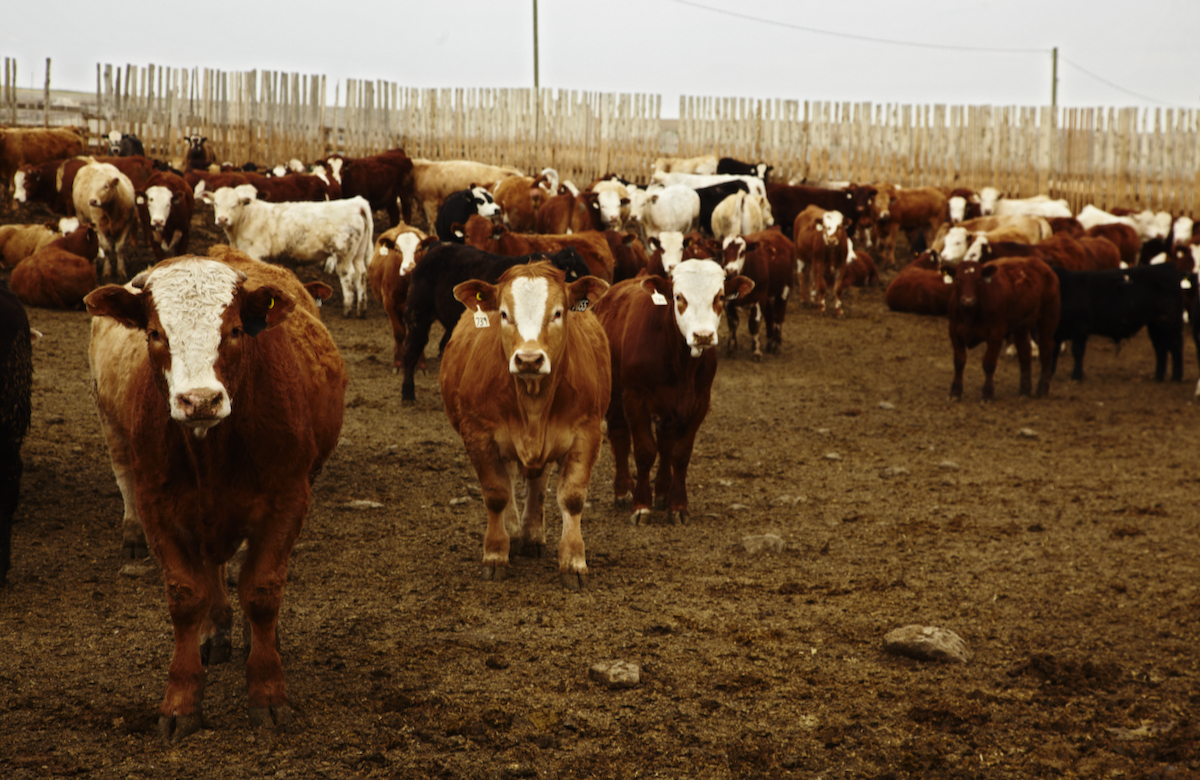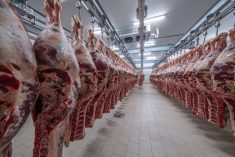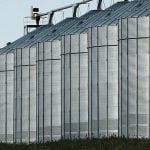The United States will allow imports of older live Canadian cattle and their beef effective Nov. 19, U.S. agriculture officials announced this morning.
The U.S. Department of Agriculture (USDA) said it will expand its list of allowable imports from countries recognized as posing “minimal risk” for bovine spongiform encephalopathy (BSE or mad cow disease) — a list of countries that currently includes only Canada.
The publication of what Canadian cattle exporters call “Rule 2” on Sept. 18, for implementation Nov. 19, is expected to help end a painful chapter in U.S./Canada trade relations, not to mention Canadian cattle production and marketing.
Read Also

U.S. livestock: Cattle at fresh highs, hogs weaken
Cattle futures on the Chicago Mercantile Exchange climbed to fresh highs on Tuesday, as tight supplies and the ongoing closure…
“This rule is firmly based in science and ensures that we continue to protect the U.S. against BSE,” said Bruce Knight, USDA’s undersecretary for marketing and regulatory programs, in a release.
“It is also consistent with our commitment to promote fair trade practices and further normalizes trade with countries that institute the appropriate safeguards to prevent the spread of BSE.”
Canadian Agriculture Minister Gerry Ritz said in a statement that he would review the rule and make further comment in the next few days, but noted its implementation “will help bring much needed stability to North America’s beef and cattle trade.”
“Rule 2” will allow imports to the U.S. of live Canadian cattle and other bovines such as bison born on or after March 1, 1999, which USDA’s Animal and Plant Health Inspection Service (APHIS) “has determined to be the date of effective enforcement of Canada’s ruminant-to-ruminant feed ban,” USDA said.
Canada imposed a ban on feeding of ruminant tissue to ruminants in 1997, but has since tightened its rules, most recently in July when it banned the use of specified risk materials in all livestock feed and fertilizer.
(Specified risk materials (SRMs) are the nervous-system tissues known to harbor the protein that causes BSE in affected animals and is linked to a related disease, variant Creutzfeldt-Jakob disease (vCJD), in humans.)
USDA’s new “Rule 2” will also allow U.S. imports of Canadian bovine meat and meat products from animals of any age, as long as the animal was subject to the feed ban, has had its SRMs removed and was not slaughtered using air-injected stunning.
The new rule also allows imports of casings and part of the small intestine derived from bovines, and blood and blood products (collected under certain conditions) from same.
APHIS expects only about 75,000 older Canadian cattle (63,000 cows and 12,000 bulls and stags) to be imported in the first year after “Rule 2” takes effect — down substantially from earlier estimates of 657,000 older animals. APHIS now says the earlier estimate didn’t take the need for age verification into account.
Overall, APHIS now expects Canada to export a total of about 1.12 million cattle to the U.S., mostly younger slaughter animals, in 2008, increasing to 1.52 million by 2028.
The U.S., among several of Canada’s other foreign customers, first blocked all Canadian cattle and beef after the discovery of Canada’s first domestic case of BSE in a northern Alberta cow in May 2003. Canada has seen nine domestic cases since then — most recently in a British Columbia dairy cow in May this year — and is also cited as the birthplace of the first U.S. case of BSE, detected in Washington state in December 2003.
The initial closure shut the door on Canadian beef and cattle exports that had amounted to over $3 billion during 2002. The U.S. reopened its border to boneless beef from young cattle (under 30 months old, or UTM) in September 2003, then to UTM cattle in July 2005.
The rule admitting Canadian UTMs was delayed for months by an injunction filed in a U.S. court by a group of mostly northern-state ranchers, the Ranchers-Cattlemen Action Legal Fund (R-CALF). That block was later overturned, though R-CALF sought unsuccessfully to restore it. The group’s most recent challenge was rejected late last month at the U.S. Ninth Circuit Court of Appeals.
R-CALF has not yet made an official comment on today’s announcement.
An earlier proposed U.S. rule that would have allowed imports of older cattle and their beef had been put on hold in early 2005, shortly after the discovery of Canada’s third case of BSE in an Alberta beef cow born after the 1997 feed ban.
















